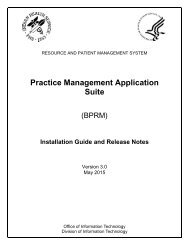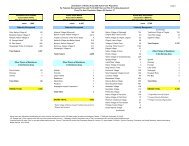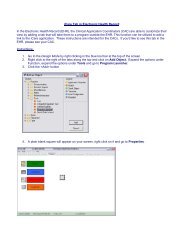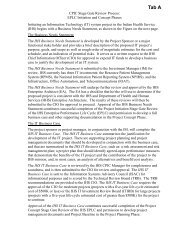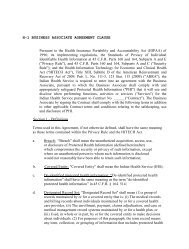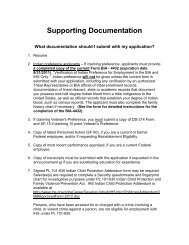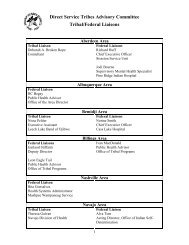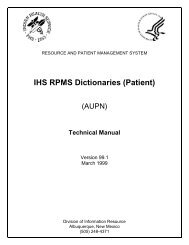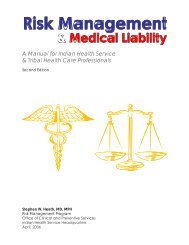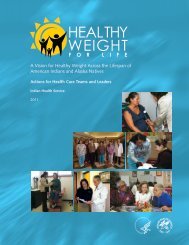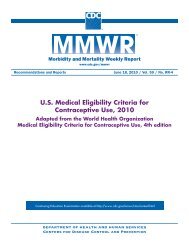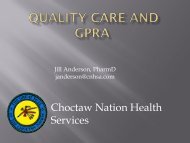Public Health Nursing Documentation Guidelines - Indian Health ...
Public Health Nursing Documentation Guidelines - Indian Health ...
Public Health Nursing Documentation Guidelines - Indian Health ...
You also want an ePaper? Increase the reach of your titles
YUMPU automatically turns print PDFs into web optimized ePapers that Google loves.
<strong>Documentation</strong> and Coding <strong>Guidelines</strong> for <strong>Public</strong> <strong>Health</strong> Nurses<br />
Discipline<br />
The PHN discipline code is 13. A contracted public health nurse is 32. The code for<br />
someone who provides driving or interpreting assistance to a public health nurse is<br />
91.<br />
6.6 Measurements<br />
Under the clinic and provider codes is a row of boxes dedicated to measurements.<br />
Any measurement taken must be documented in the appropriate area on the PCC.<br />
These measurements include weight, height, head circumference, temperature,<br />
pulse, respiration, blood pressure, and oxygen saturation. Legibility is crucial to ensure<br />
the accuracy of the data entered into RPMS.<br />
6.7 Purpose of Visit<br />
Nurses must complete the purpose of visit section in the lower half of the <strong>Public</strong><br />
<strong>Health</strong> Nurse PCC Encounter Record. The purpose of visit must be specific and reflect<br />
the highest understanding of the client’s problems or needs. Specificity in the<br />
purpose of visit section of the PCC helps produce statistical reports that more accurately<br />
portray the variety of services provided (instead of grouping services into one<br />
general category) and is vital to consistent funding.<br />
While there must be at least one purpose of visit documented, this section may contain<br />
more than one purpose. If there is more than one, list the most important purpose<br />
first followed by the others in descending importance. Only the first purpose of<br />
visit will appear on the reports generated from the PCC Management Reports—<br />
PHN Report application.<br />
Because legibility in this section is critical, printing is required, and abbreviations<br />
are prohibited. In the past, illegible abbreviations have caused incorrect data entries,<br />
such as “DM” instead of “OM.”<br />
The diagnostic category of care (e.g., diabetes, pregnancy, etc.) documented in this<br />
section should follow the International Classification of Diseases, Ninth Revision,<br />
(ICD–9) and be described in terms of a medical diagnosis or procedure. E- and V-<br />
codes should be used to supplement ICD–9 codes. E-codes address the source and<br />
mechanism of injury. V-codes address encounters that may be unrelated to a specific<br />
diagnosis for an individual, such as a “contact” for a preventable, communicable disease<br />
that the individual does not yet have.<br />
<strong>Nursing</strong> providers are encouraged to look at an ICD–9 manual to get an understanding<br />
of the terminology used. There are several pages of codes related just to pregnancy,<br />
for example. The manuals are usually available in the medical records, data<br />
<strong>Indian</strong> <strong>Health</strong> Service Page 6-5



